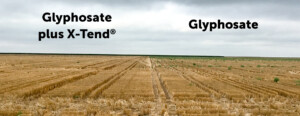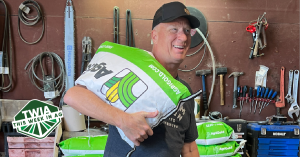Are we looking at a fertilizer shortage? Guess it depends on your definition. The availability of fertilizer isn’t a major concern in the US. It really wasn’t last year, either. As a good friend (who I consider to be among the best farmers in the country) told me last winter, “you can get it, it’s just a matter of how much you’re willing to spend for it.” That’s the issue many farmers are facing right now. How much do I invest? And do I seek alternatives to traditional NPK sources? Many of these alternatives, such as humate-based products, offer high value, improved soil health and lower overall rates/expenditures. Fertilizer prices remain historically high, but there’s not the degree of market volatility expected as there was last year. As a result, Q4 sales have moved slower than last year. But while input prices remain high, so do crop prices. That is incentivizing many farmers to chase yield. A recent survey confirms just that. Demand is strong for all fertilizer categories. 60% of farmers expect to increase micronutrient usage in 2023, 59% will increase liquid fertilizer, 51% will increase specialty fertilizers and 48% will increase yield enhancers/growth managers. Last week’s World Agricultural Supply and Demand Estimates (WASDE) report, which was bullish on the major commodity crops, should continue to carry momentum for yield chasers.
One of America’s favorite foods is getting very egg-spensive. Egg consumption has risen steadily in the past several years, based in part on being an economical and versatile protein source. The average American now consumes 288 eggs per year, whether it’s over-easy, scrambled, or in baked goods or food recipes. Like milk and bread, eggs are a staple of American diets, often cited as the number-one product to always have available in your refrigerator. Now egg prices are leaving consumers shell shocked, soaring 60% nationally this year. Californians are paying over $7 per dozen to make their omelets. The store brand at Kroger Lakeland (TN) sold for $3.49 per dozen last week, while Eggland’s Best listed for $6.59. In many areas of the country, there is an outright shortage of eggs. So, what’s causing these breakfast table blues? Several factors are to blame. Inflation, labor, feed and transportation costs are all cost contributors. Producers are experiencing the worst outbreak of avian influenza in US history, which has ravaged many commercial egg-laying flocks. Much like dairy cows differ from beef cows, hens used to lay eggs for human consumption differ genetically from those that produce broilers for meat consumption. Egg layers are bred to maximize egg output, while meat hens are bred to hatch chicks that grow rapidly – reaching market in just six weeks! Over 50 million birds have perished due to the flu, whether through transmission or prematurely by producers proactively sending them to early slaughter in hopes to control the virus. Disease management practices are intense in the poultry/livestock industries. During my days working for animal health clients, I’d often visit large poultry and swine facilities. You’d be asked when was the last time you visited a facility and would be denied entry if within a certain window. You’d have to wear boot covering and hazmat-style suits to enter, then dispose of them upon exit. Yet an underreported factor in all this egg-steria is California’s cage-free mandate (soon to be followed by several other western and east coast states). This practice adds over 35% greater production costs. Many operators say it will take a decade to recoup their investment costs, others have walked away from the business. Regardless of intentions, mandates in ag often lead to undesired consequences.
This week the World Economic Forum meets in that now famous skiing village of Davos, Switzerland. There’s no shortage of big-wig speakers descending upon the highest city in Europe. Davos has evolved into a political lightning rod, yet there’s no denying the forum’s influence on public policy and its impact on the agricultural industry. While it’s safe to say not many farmers fully embrace the concept of globalism, they certainly operate in a global economy. This not only includes the products they sell, but as we saw last year, the inputs they use to produce their crops. Plus, the ag industry is at the center of climate activism, which once again is the rave at Davos. Noted ag-related programming and speakers on tap include: Revolutionizing Food Security (Werner Baumann, CEO of Bayer Ag), Land Matters (Stefaan Decraene, Board Chairman of Rabobank and Jennifer Morris, CEO Nature Conservancy), Business Action in Nature (Svein Tore Holsether, CEO of Yara) and Sustainability Served (Arnold d’Allissac, World Farmers Organisation and Hanneke Faber, President of Unilever). Regardless of personal opinion, it’s wise to pay attention to what comes out of Davos. You can bet many of our policy makers do.
Now is the season when many farmers are hauling grain to elevators, river terminals, ethanol plants and processors. The wait times at these grain facilities are getting crazy. A good friend in southern Indiana tells me the lines are averaging about 90-minutes long. Yet that’s nothing compared to this alarming video that surfaced on ag social media last week from up in Liden, Indiana. Unfortunately, hauling grain does not work like OpenTable restaurant reservations. You just wait it out in line. And in some cases, you need to deliver grain by a specified date to fulfill your contract, so waiting for a day with shorter lines is often not an option. Many farmers employ hired hands year-round, so this is something to keep them busy. Let’s just hope they have a cooler packed and can access Netflix while they’re in line.
Related Posts

Field Trial: X-Tend® Increases Glyphosate Effectiveness
Objective Over the years, some weeds have developed resistance to common herbicides such as glyphosate. To overcome this hurdle, growers may bump up the rates or add other herbicides or products with different mechanisms/modes of action into the tank mix. Such approaches have had mixed results over the long run and have increased the cost...

This Week in Ag #61
“Free seed can cost a lot of money.” That was dad’s less-than-tactful response to a seed salesman hoping to woo him with a special offer. Was dad exaggerating (as he was notoriously known to do)? Not in this case. Even using today’s financial standards – where seed costs have more than quadrupled in the 30 years...

The Water Break Podcast Hits 5,000 Downloads
Our Water Break podcast has made a splash by reaching the milestone of 5,000 downloads this week. The steady growth of this project feels like a pat on the back and helps us stay motivated to come up with new content for our listeners each month. According to the statistics report from Blubrry, our podcast...

